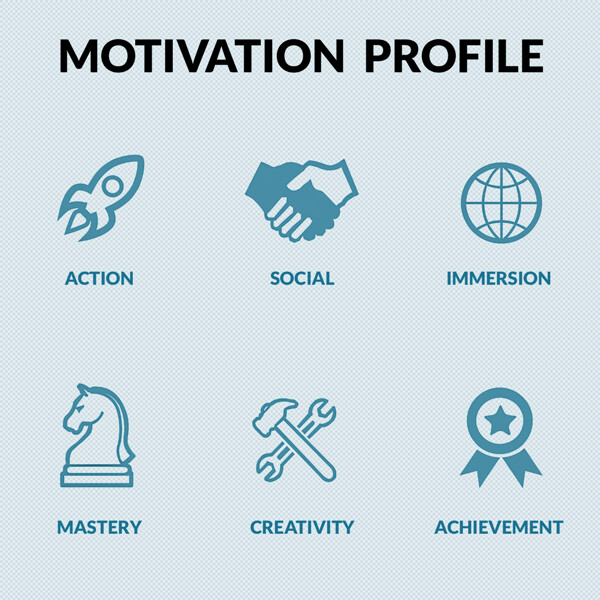
Illustration by Quantic Foundry
Who is this for?
The team is always the first customer….so, why should we try to understand players?
Customer obsession has become an Amazonian buzzword but it’s simply the combination of several timeless business concepts. When we have a deep understanding of what players value, we create experiences that are more engaging.
Motivation models are a lens to view decisions with more data, and can give us a common shorthand to use when discussing ideas. Again, since the development team is the first customer we’ll intuitively make stronger creative decisions because we’re making things we’re excited about and WE want to play.
Motivation Profiles
The model comes from QUANTIC FOUNDRY - to date they’ve surveyed around 650,000 gamers. They’ve given a handful of great GDC talks on their profiling process as well.
The models were generated based on:
- Intuition/Observational models (e.g., Bartle’s Player Types)
- Theory-driven models (e.g. PENS based on Self-Determination Theory)
- Factor analytic models (e.g. Sherry's Uses & Gratifications Model).
Using these motivations we can better evaluate the kind of experience we want to create. This also makes positioning, and creating marketing maps of competitive titles much easier as well.
To learn more about player segments, check out the Quantic Foundry Blog.
If you feel like getting to know yourself better, take the Gamer Motivation Profile survey!
Market < Position < Segment < Target Audience
Marketing RULE #1 - do not try to serve everyone. Does Walmart market to everyone? No.
They focus on shoppers looking for low prices.
Market | we’ll always be in the video game market (3B+), so we don't have to overthink that portion of this but, these ideas are more easily understood together.
Position | where we assess competitive advantages and position ourselves in the players minds (and the market) to be the most attractive option.
Segment | identifying the portion of the market to be segmented and developing profiles. Who COULD this be for?
Target | identify the best segments. Who SHOULD this be for?
It should be for YOU... and if it's not, you may want to try something that is.
